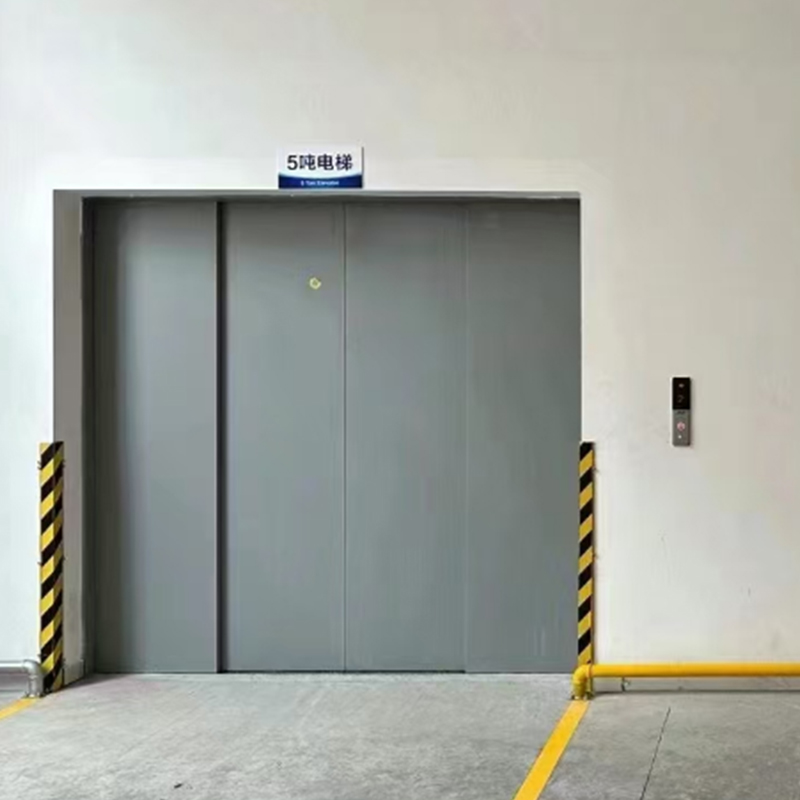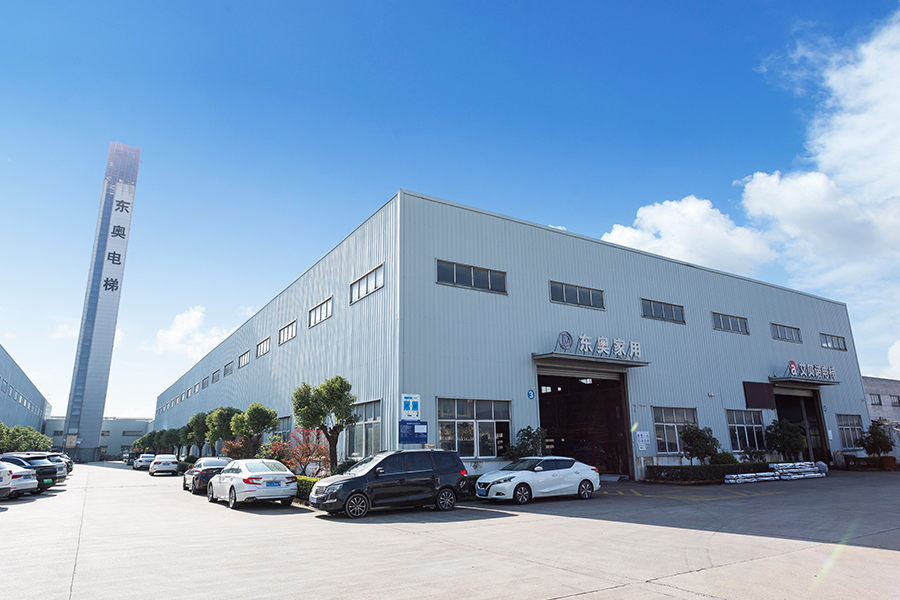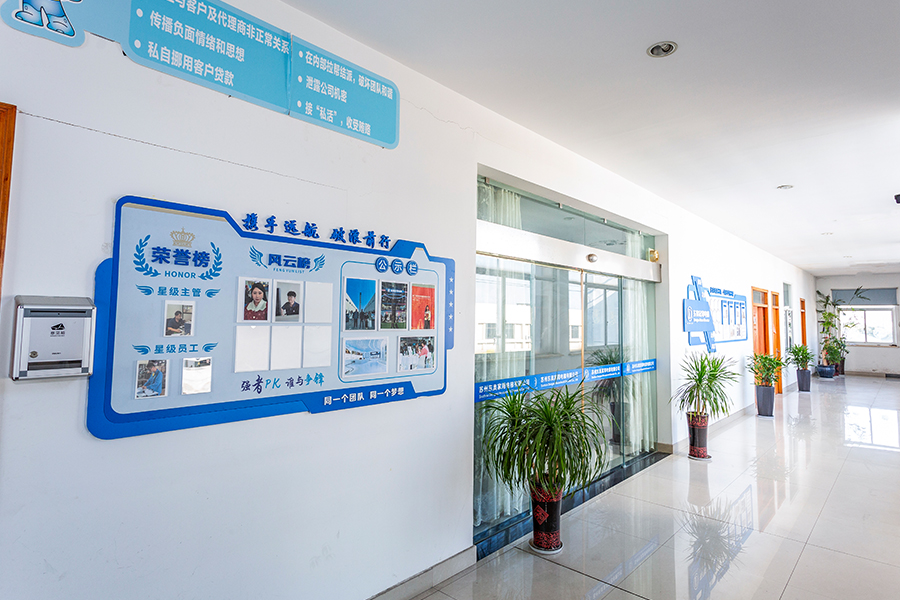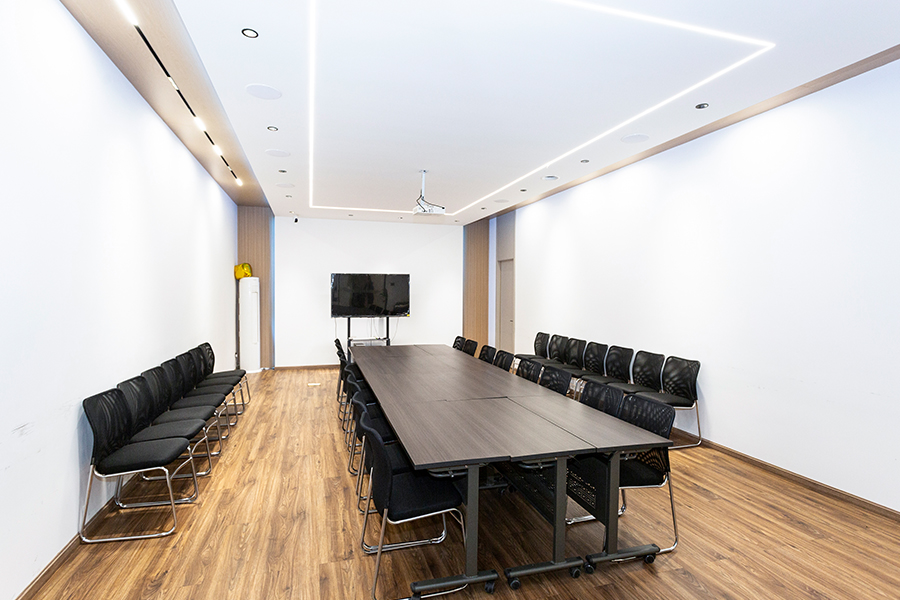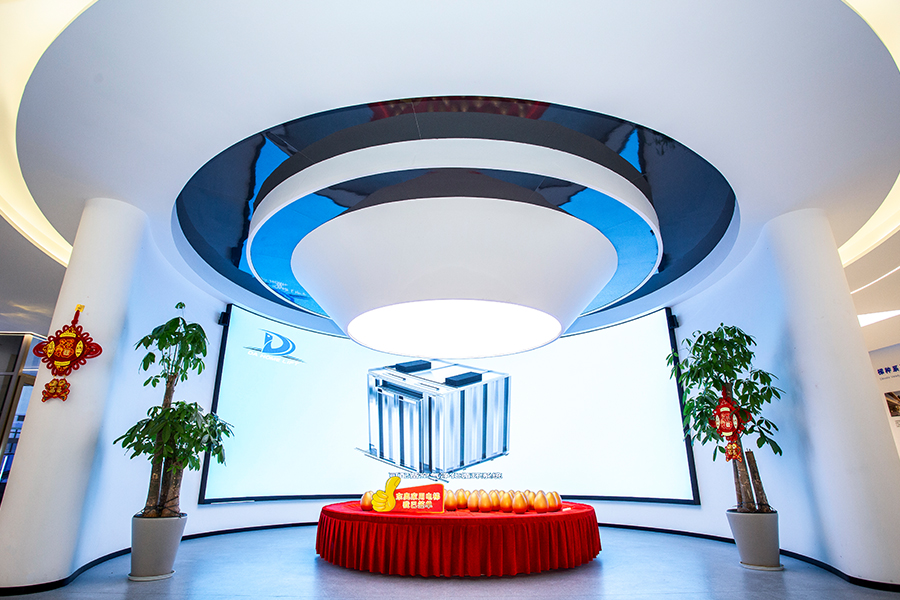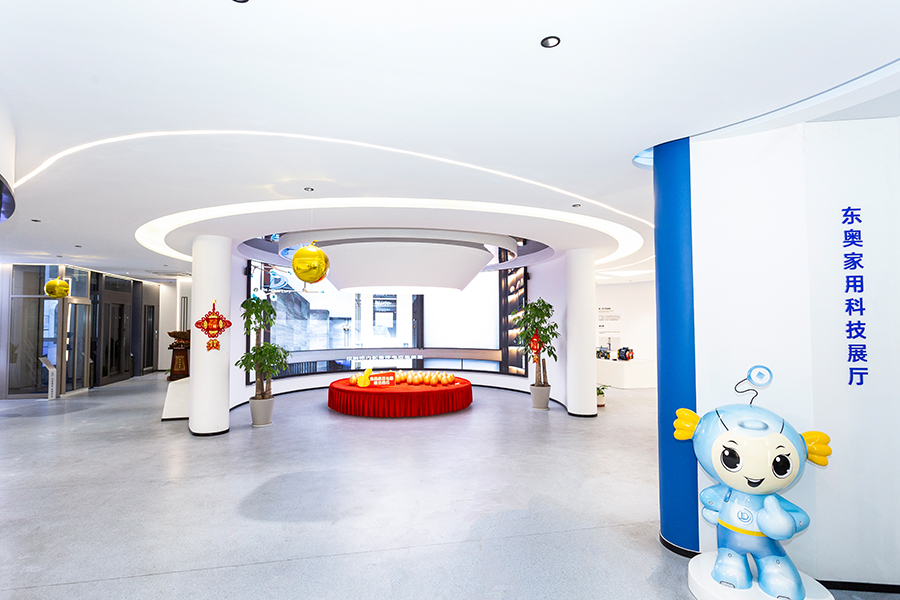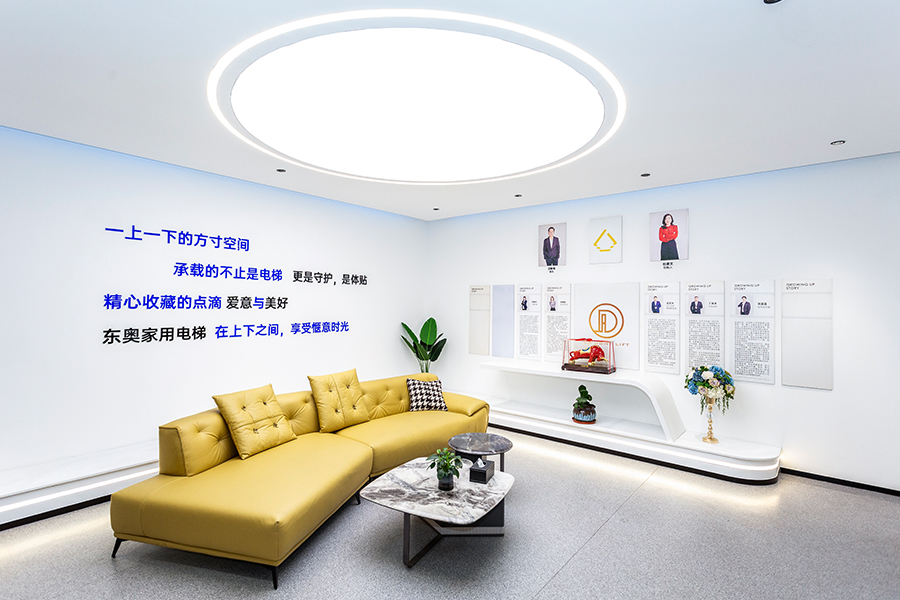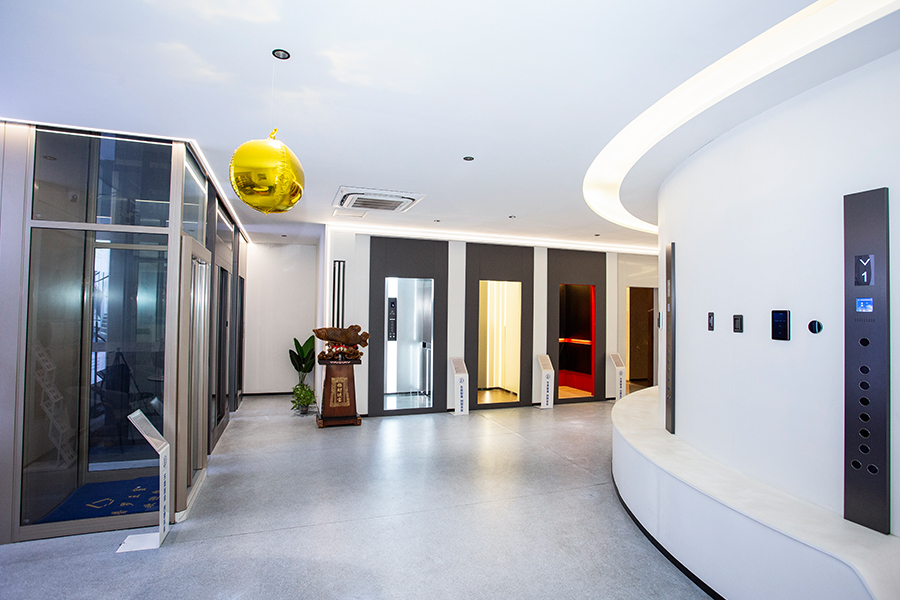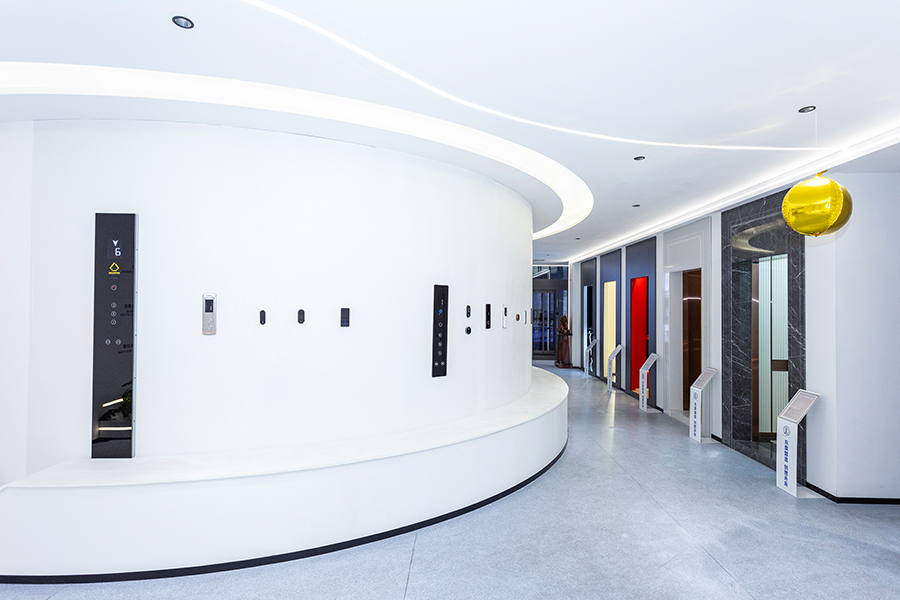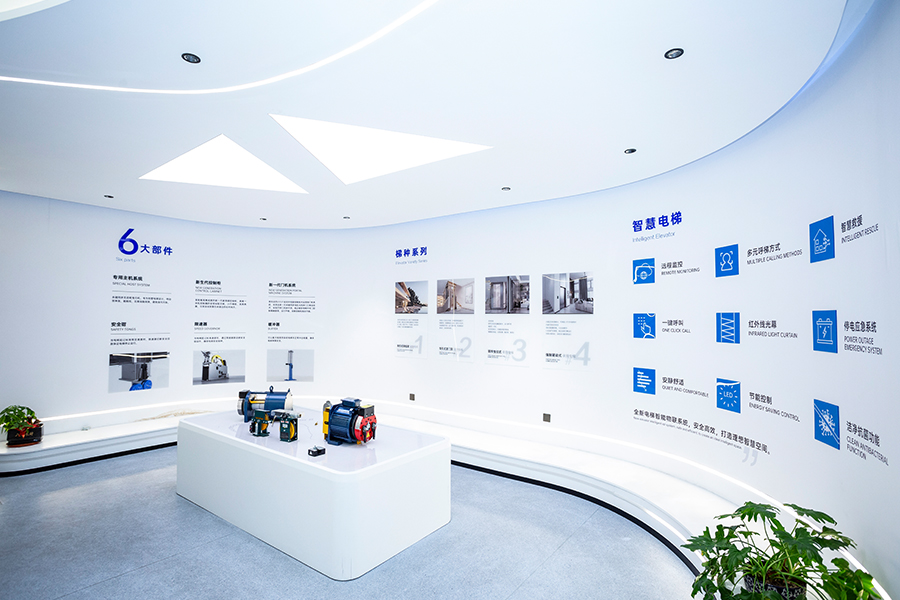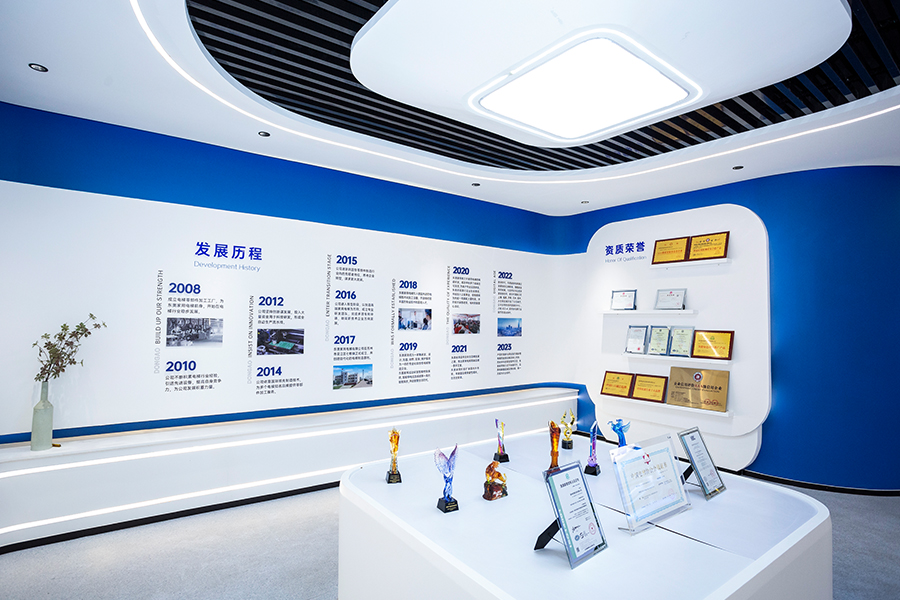Custom Commercial Freight Elevator Manufacturers
Traction freight elevator, also known as a cargo elevator, realizes the lifting and lowering of the car by the friction between the traction rope and the traction wheel driven by the traction machine. As the power source of the elevator, the traction machine reduces the speed and increases the torque through the reduction box (if any) when the motor rotates, drives the traction wheel to rotate, and then realizes the rise or fall of the car through the friction between the traction rope and the car and the counterweight. It can quickly transport goods, save manpower and time costs, and adopt multiple safety measures, such as anti-fall safety devices and clamps to prevent goods from slipping, to ensure the safety of the handling process. At the same time, the elevator control system also has multiple safety circuits to ensure the safe and reliable operation of the elevator. Energy-saving technologies such as variable frequency speed regulation and automatic shutdown are also adopted to reduce energy consumption and meet environmental protection requirements. In addition, the use of a gearless permanent magnet synchronous main engine also further reduces energy consumption and noise. Traction freight elevators are widely used in factories, warehouses, shopping centers, libraries, and other places, providing a convenient and efficient solution for cargo transportation.
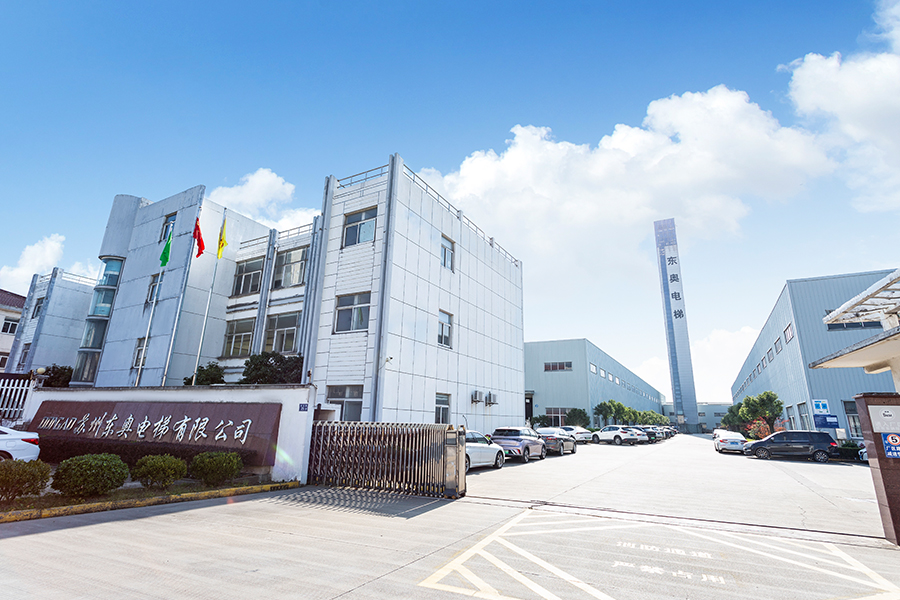
-
Choosing a Trailing Platform Ladder Over a Conventional Ladder When you are managing an outdoor event, theater setup, or any worksite that requires frequent acc...
READ MORE -
The Conceptual Foundation of Gantry-Enhanced Viewing The phrase "Trailing Gantry Sightseeing" immediately conjures an image of heavy machinery repurposed for th...
READ MORE -
Understanding the Core Functionality of a Traction Gantry Car Model A traction gantry car model represents a specialized piece of equipment designed for the pre...
READ MORE -
action Passenger Elevator What factors influence the installation cost of a traction passenger elevator relative to the number of floors? The installation...
READ MORE -
I. Introduction: Why are "Custom Traction Home Lifts" an Ideal Choice? When considering a home lift, the goal is often to find a perfect blend of reliability, p...
READ MORE
How do the rated power, torque and speed of the traction machine affect the load capacity and running speed of commercial heavy-duty freight elevators?
As the core power component of commercial heavy-duty freight elevators, the performance parameters of the traction machine - rated power, torque and speed - play a decisive role in the load capacity and running speed of the elevator. In-depth exploration of how these parameters affect the performance of the elevator will not only help to understand the working principle of the elevator, but also provide a scientific basis for the design, selection and maintenance of the elevator.
Rated power and load capacity of the traction machine
The rated power of the traction machine is an important indicator to measure its output capacity, which directly determines the maximum weight that the elevator can carry safely and stably. In commercial heavy-duty freight elevators, as the load demand increases, the power required by the traction machine also increases. A traction machine with a higher rated power can output greater power, thereby driving heavier cars and goods up and down. This means that for occasions where bulk goods need to be transported frequently, the selection of a traction machine with a higher rated power is the key to ensuring the load capacity of the elevator.
Rated power is not only related to the load, but also indirectly affects the operating efficiency of the elevator. When the elevator is fully loaded or close to full load, the high-power traction machine can maintain a stable operating state, reduce the slow start or operation interruption caused by insufficient power, and ensure the continuity and efficiency of cargo transportation.
Torque and elevator starting and acceleration performance
Torque is a physical quantity that measures the rotation capacity of the traction machine. It determines the maximum static friction that the traction wheel can overcome at startup and the dynamic performance during acceleration. In commercial heavy-duty freight elevators, the size of the torque directly affects the starting speed and acceleration of the elevator. High-torque traction machines can quickly overcome the inertia of the car and cargo and achieve fast and smooth start, which is crucial to improving the overall operating efficiency of the elevator.
Especially in high-rise or long-distance transportation, the elevator needs to reach the rated speed in a shorter time. High-torque traction machines can more effectively utilize the power of the motor and reduce the time required from startup to stable operation, thereby shortening the cargo transportation cycle and improving logistics efficiency.
Speed and running speed
The speed is the number of rotations per minute of the traction machine output shaft, which directly determines the running speed of the elevator car. In commercial heavy-duty freight elevators, increasing the speed can significantly speed up the elevator's lifting and lowering speed and shorten the time it takes to transfer goods between floors, which is particularly important for warehousing and manufacturing industries that pursue efficient logistics.
However, the increase in speed is not unlimited. Excessive speed may cause increased friction between the traction rope and the traction wheel, increase wear, shorten the life of the equipment, and may cause vibration and noise problems. Therefore, when designing an elevator system, it is necessary to comprehensively consider factors such as the speed of the traction machine, the material and strength of the traction rope, and the total mass of the car and goods to achieve the best balance between operating efficiency and safety.
In terms of the optimization and application of the above technical parameters, Suzhou Dongao Home Elevator Co., Ltd. has demonstrated deep industry accumulation and innovation strength. The company not only independently develops a number of patented technologies, but also fully introduces Germany's advanced elevator production processes and production equipment to ensure that each elevator can reach the industry-leading level. By using efficient modern management models, Suzhou Dongao Home Elevator Co., Ltd. not only enables industry innovation and breakthroughs, but also focuses on providing customers with intelligent solutions for high-end villa elevators and commercial heavy-duty freight elevators, meeting the market's urgent needs for safe, efficient and intelligent elevator systems with excellent product performance and service quality.
The rated power, torque and speed of the traction machine are key factors affecting the load capacity and operating speed of commercial heavy-duty loading elevators. Through scientific and reasonable parameter configuration and technological innovation, Suzhou Dongao Home Elevator Co., Ltd. is leading the elevator industry to a more efficient, safer and smarter direction.


 En
En English
English русский
русский Español
Español عربى
عربى
